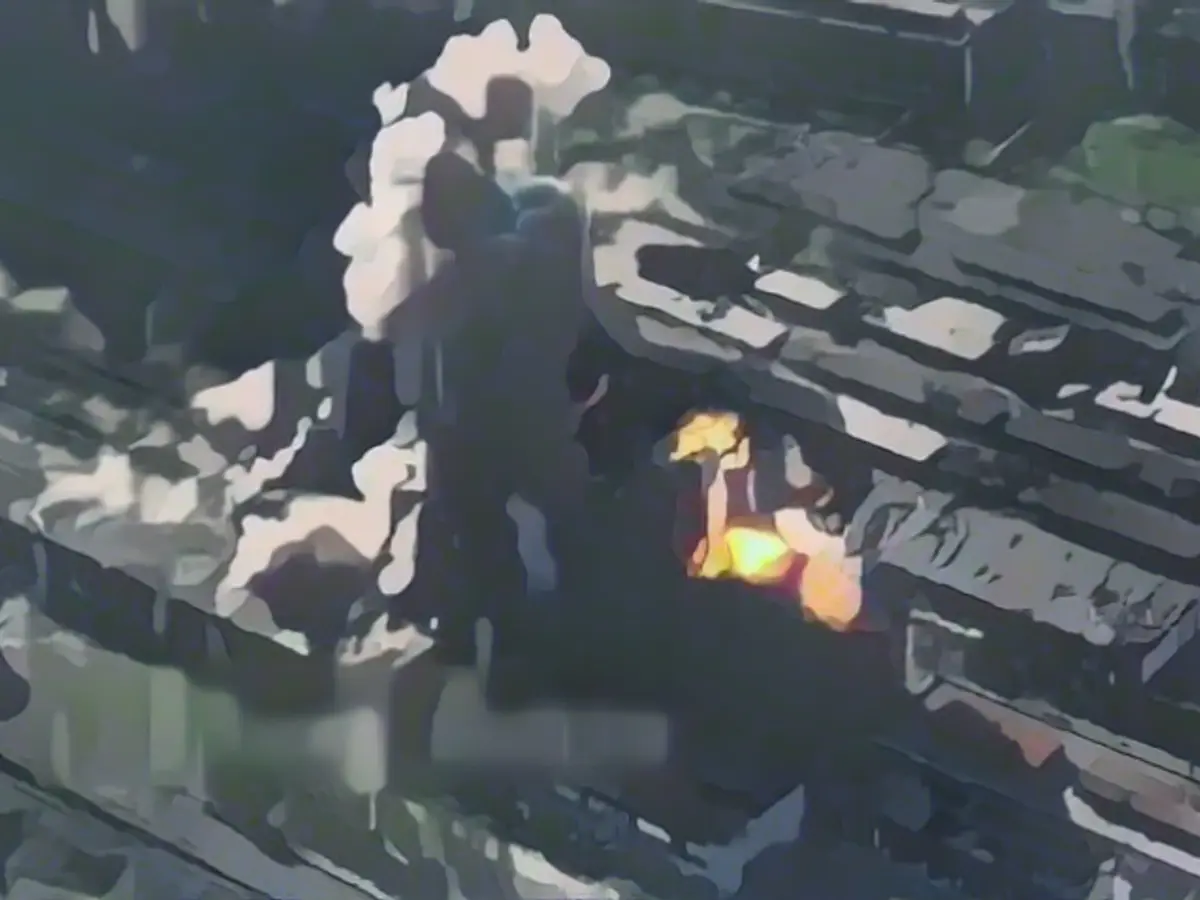Retired US Major General weighs in on Ukraine's fight for victory
Retired US major general Retired General Repas, who has been advising the Ukrainian military for six years under government contracts, recently visited Poland and Western Ukraine to better understand the ongoing conflict. In an exclusive conversation with us, Repas shared his insights on the current situation and offered suggestions on how the West can assist Ukraine in overcoming Russian aggression.
According to Repas, there are several critical issues that must be addressed in order for Ukraine to successfully wage war against Russian forces:
- Inefficient supply chain for military equipment: Repas lamented that the Ukrainian military's supply chain for military equipment was inefficient, requiring additional military might to expel Russian forces from Ukrainian territory.
- Importance of logistics and supply management: Repas emphasized that understanding consumption rates of critical military resources such as fuel, ammunition, and batteries was crucial for effective warfare.
He also pointed out that the process for allocating military equipment was personalized and not based on strategic or objective data. Instead, requests for equipment like Javelin missiles were handled on an individual basis, resulting in a disorganized and inefficient state of logistics. In Repas' view, a more systematic approach to resource allocation was essential for achieving military success.
The likely outcome of the conflict:
Repas presented three possible scenarios for the future of the conflict:
- Russian victory on the battlefield: If Russia achieves decisive victories, their forces could maintain control over occupied territories in the long term.
- Ukrainian victory in the current struggle: If Ukraine manages to counter Russian offensives and push back their forces, the conflict could drag on, potentially evolving into a stalemate.
- Possible stalemate: In this outcome, neither side achieves a decisive victory, leading to an uncertain future for Ukraine. In the event of a stalemate, a weakened Russia would likely continue controlling occupied territories indefinitely, further destabilizing the region.
To prevent undesirable outcomes, Repas suggested the West should take action to bolster Ukraine's defensive capabilities and deter further Russian aggression:
- Weakening Russia through support for Ukraine: Repas argued that US and NATO support for Ukraine was essential in strengthening the country's military to counter Russian forces.
- Enhancing NATO capabilities: Repas recommended enhancing NATO's strength to dissuade Russia from engaging in further military aggression against members of the alliance.
- Weakening Russian military capabilities: By imposing sanctions, deterring cyberattacks, and bolstering the military readiness of NATO member states, the West could deter and weaken Russian military power.
- Establishing a strategic reservist force for Ukraine*: Repas suggested building a strategic and operational reserves force for Ukraine capable of launching offensives to push back Russian forces and secure Ukraine's borders.
Addressing these challenges in practice
According to Repas, the US, France, Poland, the UK, and Germany should each build a Ukrainian brigade of combat power. These nations have formidable military capabilities and can assemble armies by providing equipment and training to Ukrainian troops among their own forces.
Repas proposed that these five brigades be distributed across five operational zones, allowing for a combined Ukrainian force of 40,000 soldiers, equipped with advanced western weaponry and combat tactics. By working together, these nations could contribute to a comprehensive defense strategy to deter Russian aggression and provide Ukraine with a stronger military presence.
Enrichment Data:
A Ukrainian strategic military force of five brigades and up to 40,000 soldiers can contribute to winning against Russian forces in Ukraine by leveraging several key strategies and tactics:
- Exploiting Vulnerabilities in Russian Manpower Reserves:
- Surprise and Asymmetric Warfare: Ukrainian forces can exploit vulnerabilities in Russia's manpower reserves by conducting surprise operations, such as the incursion into Kursk Oblast, which can overwhelm limited Russian force groupings and complicate their operational plans[1][2].
- Technological Adaptations and Mechanized Maneuver:
- Electronic Warfare (EW): Ukrainian forces can integrate technological adaptations with ground maneuver to overwhelm Russian forces. This includes using EW interference to disrupt Russian command and control systems, as seen in the Kursk incursion[1].
- Targeting Command and Control Structures:
- Strikes on Tactical and Main Command Posts: Ukrainian forces can conduct strikes against Russian command posts, such as those of the 29th Combined Arms Army and other key units, to disrupt Russian command and control structures[1].
- Utilizing Drone Operations:
- Limiting Russian Mechanized Maneuver: Ukrainian drone operators have played a significant role in limiting Russian mechanized maneuver by providing real-time intelligence and conducting strikes against Russian forces[1].
- Defensive Tactics:
- Minefields and Dispersed Forces: Ukrainian troops can use minefields and disperse their forces to avoid casualties. This tactic involves seeding mines on axes and terrain features where Russians are likely to attack, and extending the depth of fires to maximize attrition beyond line of sight[2].
- Maximizing Attrition:
- Concealment and Indirect Fire: Ukrainian forces can maximize attrition by using armoured vehicles for indirect and direct fire, concealing tanks and infantry fighting vehicles within 3 km of the frontline, and sallying forward to engage in direct-fire missions before returning to protected hides[2].
- Maintaining Air Defense Capabilities:
- Depleting Russian Air Defense Capabilities: Ukrainian forces can maintain air defense capabilities to counter Russian long-range strikes, thereby preventing Russian forces from achieving decisive effects through aerial bombardment[2].
- Psychological and Informational Pressures:
- Seizing the Narrative: By conducting successful operations like the Kursk incursion, Ukraine can seize the narrative and generate strategically significant informational and political pressures on Russia, undermining Putin's confidence in Russian military capabilities[1].
By combining these strategies, a Ukrainian strategic military force of five brigades and up to 40,000 soldiers can effectively contribute to winning against Russian forces in Ukraine by exploiting vulnerabilities, leveraging technological advantages, and maintaining a strong defensive posture.
[1] UGM-72 Anti-tank Guided Missile (ATGMs): Weaknesses and Countermeasures in the Russian Army. Robert Lee. Nov. 15, 2022.
[2] Ukraine's Approach to Ground Combat: Forest Fighting and Mine Warfare. Robert Lee. Dec. 8, 2022.







